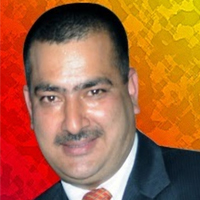Receptor pharmacology and other relevant factors in lower urinary tract pathology under a functional and toxicological approach: Instrument to better manage antimicrobials therapy
Published on: 14th December, 2018
OCLC Number/Unique Identifier: 7964754521
In various patients conditions involved in lower urinary tract disease LUT (like overactive bladder, bladder neck sclerosis, dis –synergy (with our synenrgic contraction between bladder detrusor and bladder neck, BPH, recurrent cysytitis, interstitial cystitis, chronic prostatitis, uretral stenosys, loss of sfinteric coordination.
Prostatic cancer, anatomic abnormalities and other the receptor status play relevant role to reduce effect of vicious clycle that can be responsible in progression of the pathologic process.
In this work the complex receptorial status is analyzed to verify new therapeutic strategies.
Starting from the observation that various irritant substanties produce irritant stimulus in Prostatic Patients or in bladder neck condition is interesting to deep understand the etio-patogenesys and Functional results.
In Various prostatic, bladder neck or ureteral condition a reduced urinary fluss can produce infectious.
Conditions like acute or chronic prostatitis.
Irritants sustanties in diet (in example etilic alcohol drink, hot spices, crud meats, carbonate drinks, caffeine and other) can produce Painful stimulus in innervations of vecical trigonous, bladder neck and prostatic urethra.
The same recurrent cystitis and Bph contribute in a complex situation.
This stimulus produce ipertonus of bladder muscle involved in the expulsion of urine.
The event related inflamation and edema (bladder, prostatic uretra, trigonus) contribute to the global effect.
So conditions like bladder neck sclerosys IPB, recurrent prostatitis and cistitys in acts in a vicious circle. (Also immunomediated: Bph and cronic prostatitis with linfocite infiltration and tissue remodeling).
The ormonal status check the systems (see 5-ARI efficacy in Bph).
Simpatic, parasimpatic and other system are deeply involved.
Also behavioral habits or diet can influence in example urinary flux in a complex system like LUT. (Bladder and prostatic irritants that can produce edema and acute inflamation).
Other behavior habits are deeply involved as too much sedentary, water intake, coffee, pee modality and also psychological profile and stressing conditions.
Some disease like diabetes produce high consequences in all this systems due to
Bladder modification, oxidative stress, osmotic movens, and increase susceptibility of urinary infections.
This article are verified this kind of movens that contribute in physio -pathology of some low urinary tract conditions.
The anatomic abnormalities produces, obviously, physiological disfuntions.
Recurrent urinary tract infections, inadequate antimicrobial therapy:
Profile of resistance, duration of therapy, kind of antimicrobials, posology,
Pk. Kinetics, associations, compliance, biofilms, micro calcifications (recurrent chronic prostatitis) contribute to a progression of the condition.
The Immunitary role in chronic prostatitis and growth factors as promoter of BPH
Published on: 25th April, 2018
OCLC Number/Unique Identifier: 7666286870
In the actual medical therapy of BPH, we can see: antibiotics, alpha blockers, 5-ARI, fitotherapeutics/natural products (Serenoa repens) with different which display clinical activities and other molecules such as FANS (local or systemic dosage forms) cortisones and others. Relationship between immune systems and chronic prostatitis are strictly involved in BPH progression. A vicious cycle that involve chronic flogosis, tissue remodeling, grow factors, inhibition of apoptosis, and other phenomena. Observing BPH pathogenesis under an immunologic point of view make possible to search new pharmacological strategies, to improve actual therapy.
The aim of this work is to observe some relevant literature in our opinion related the management of BHP and its progression under a pharmaceutical and immunological point of view. A deep knowledge in the pharmaceutical properties of some molecules (antimicrobials, anti-phlogosis agents, Anti-androgenic agents, alpha blockers, 5-ARI and other treatments, techniques, interventions or instruments) can help the physicians to pick the right choice.
Tamsulosin and Dementia in old age: Is there any relationship?
Published on: 1st October, 2019
OCLC Number/Unique Identifier: 8280929913
Tamsulosin is used to treat Benign Prostatic Hyperplasia (BPH), prescribed annually to about 12.6 million patients worldwide. It is an alpha-adrenergic antagonist that reduces the tone of the prostate smooth muscle involved in the pathophysiology of BPH. By acting on alpha 1A receptors, predominant in the prostate, tamsulosin also acts on receptors present in the brain. This study consisted of a literature review aimed at disseminating scientific knowledge about the relationship between the use of tamsulosin and the onset of dementia. PubMed, Scopus, Scielo, Embase, and Web of Science studies involving dementia in patients using tamsulosin in the last five years were selected. The review showed a risk correlation and a higher incidence of dementia in treated patients. The risk ratio, when compared to other medicines, approached 1.20. In conclusion, it was identified the need for clinical trials with higher sampling power to increase relational significance due to the high prevalence of BPH and the extensive use of tamsulosin in elderly patients with the disease.
Huge median prostatic lobe: a interesting case of BPH
Published on: 30th August, 2022
Benign Prostatic Hyperplasia (BPH) refers to the nonmalignant growth or hyperplasia of prostate tissue and is a common cause of lower urinary tract symptoms in men [1].
Prostate health in India (BPH & Prostate Cancer)
Published on: 3rd September, 2022
The prostate gland, found only in men, is an extremely important organ of the reproductive system, but it is not taken care of adequately, leading to prostate inflammation and benign hypertrophy or even cancer. Benign prostate enlargement compresses urine flow through the urethra, leading to uncomfortable urinary symptoms. Hyperplasia increases the risk of bladder stones, urinary tract infections, and kidney problems. In India prevalence of Benign Prostrate Hyperplasia (BPH) is around 50% of men by the age of 60 years. Studies suggest that benign prostatic hyperplasia is a result of the disproportion between oestrogen & testosterone. A higher proportion of oestrogen within the prostate boosts the growth of prostate cells. The management of BPH is streamlined in recent times and the majority are on medical treatment.Prostate cancers are one of the cancers showing a significant increase in incidence along with mouth and kidney and lung cancers among the male population. With an estimated population of 1400 million and about 98 million males over 50 years of age in mid-2022 and the average life expectancy increasing 68.4 years, has a bearing on the changing incidence and pattern of prostate cancer in the current decade in India. Based on the five population-based cancer registries in 2009-10, the age-adjusted annual incidence rates per lakh population of prostate cancers were highest in Delhi (10.2) followed by Bengaluru (8.7), Mumbai (7.3), Chennai (7) and Bhopal (6.1). Cancer can co-exist with BPH. Prostate cancer management is still in the development stage with a 5-year life expectancy of around 64%.The prostate is the second leading site of cancer among males in large Indian cities like Delhi, Kolkata, Pune, and Thiruvananthapuram, and the third leading site of cancer in cities like Bangalore and Mumbai. Despite the limitations of diagnosis, the annual cancer incidence rate ranges from 5.0-9.1 per 100,000/year, as compared to the rates in the United States and other developed countries of 110 &180 for whites and blacks respectively.This article is a review of Prostate health in India based on a personal observation of around 183 cases by the author in the last 10 years.Materials & methods: This is an observational study report of three cohorts of men across the country. The sample was of people encountering the author. The sample included i) 69 septuagenarians plus ii) 30 senior citizens aged 60 - 70 years and iii) 84 men in 40 – 60 - year age groups over the last decade. The data source was sharing annual check-up reports or consultation report in person for seeking 2nd opinion. A minimum of 2 consultations, first when diagnosed and the recent between July 2021 to June 2022.
















